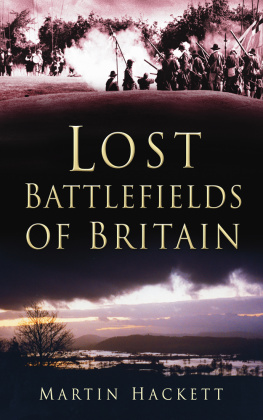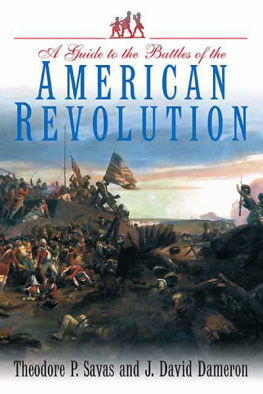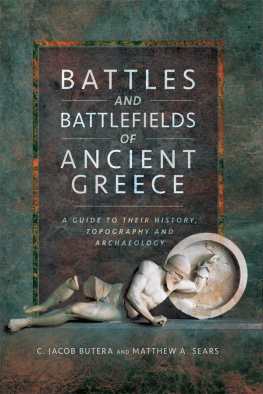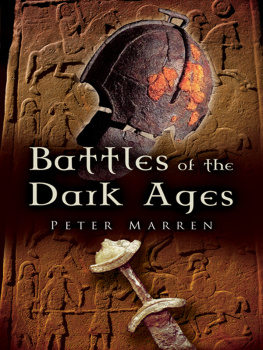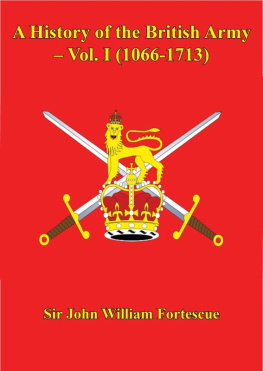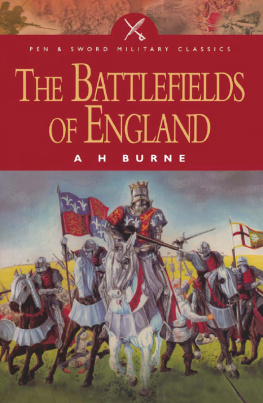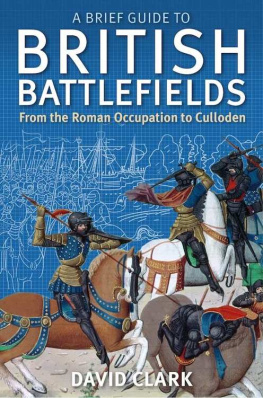
L OST
B ATTLEFIELDS
OF B RITAIN
M ARTIN H ACKETT

Endpapers, front: The Severn valley at Welshpool; rear: Re-enactment of Montroses mens initial salvo at the battle of Inverlochy.
First published in 2005
This paperback edition published in 2011 by
The History Press
The Mill, Brimscombe Port
Stroud, Gloucestershire, GL 5 2 QG
www.thehistorypress.co.uk
This ebook edition first published in 2013
All rights reserved
Martin Hackett, 2005, 2011, 2013
The right of Martin Hackett to be identified as the Author of this work
has been asserted in accordance with the Copyright, Designs and Patents Act 1988.
This ebook is copyright material and must not be copied,
reproduced, transferred, distributed, leased, licensed or publicly
performed or used in any way except as specifically permitted
in writing by the publishers, as allowed under the terms and
conditions under which it was purchased or as strictly permitted by
applicable copyright law. Any unauthorised distribution or use of this
text may be a direct infringement of the authors and publishers rights,
and those responsible may be liable in law accordingly.
EPUB ISBN 978 0 7509 5410 5
Original typesetting by The History Press
Contents
General Touring Information
The author has personally visited and photographed, during the last twelve months, each battle site listed within this book, so that the information you read and the photographs you see should be as accurate and as up-to-date as possible; those photographs without a specific credit were all taken by the author. The majority of the photographs were taken during the winter months, so be prepared for some fields to look different if they are rich with crops where once bare soil lay; similarly with hedges and trees, their natural spring and summer growth may now obscure some landmarks that were clearly visible before, so be prepared for things to look a little different. Also the land use, infrastructure, road systems and rights of way can all change, sometimes at very short notice. If you encounter difficulties in following any tour then we would very much like to hear about it, so that we can incorporate changes in future editions. Your comments should be sent to the publisher at the address provided at the front of this book. With each battle is a scale map designed to illustrate the key locations on the tour and, where applicable, the key points are cross-referenced to the text. So that you derive maximum value and enjoyment from your exploration of these battle sites, I would suggest that you equip yourself with the following items:
Appropriate maps. A general road map to navigate to the appropriate location and, if more detail is required, then either the Landranger or Explorer series of maps from the Ordnance Survey, which are available from all good booksellers in most high streets of the UK.
Lightweight waterproof clothing and robust footwear. These are essential, especially if one leaves the footpaths of built-up areas.
A compass. This is always a useful tool, and it allows the reader to verify the locations of troops and their movements upon the battlefield.
A camera and spare films. The author always carries a cheap, disposable camera as emergency cover for his more expensive equipment, and they have saved the day on more than one occasion.
A notebook to record details of any photograph taken and to jot down any changes that have occurred, with any information that you feel would be useful to the publishers.
Food and drink. Although in Britain, in theory, you are never far from a retail outlet, there are roads in Wales and Scotland where, even in the twenty-first century, passing another car can be a rarity, especially in winter. It is therefore sensible always to take spare drinking water with you and some light refreshments, particularly if you are planning to do some of the full-length walks.
Binoculars. An excellent aid especially when verifying the location and interpreting how much each army could have seen of the other when they were deploying for battle.
The author has visited all of the sites by vehicle as not all of them are accessible by rail, but in each chapter the details of the nearest railway station have been provided so that travellers can make their own arrangements if they intend to visit by train. Within each chapter are details on other attractions to see in the area, but this is not a definitive list; as the reader will appreciate, whole brochures are available on some towns and cities and it would be impossible to include every attraction or indeed cater for every taste. The author would advise anyone planning to visit any of these sites to contact the local tourist office, as they can provide news of any special events and are generally happy to post out information, including maps and places with accommodation. The author has contacted or visited over forty tourist offices in the last year and has received excellent service from all of them. To assist the reader, each chapter has the details for the local tourist office included.
For those disabled visitors wishing to visit a battle site, please take note of the routes and location points detailed. While it may not be possible to explore a complete site because of the nature of the terrain, wherever practicable the author has given vantage points, many of which can be reached by road. So, depending on the level of disability, the visitor should still be able to enjoy the majority of locations within the book. Buttington, St Albans, Norwich, Powick Bridge, Lyme, Montgomery, Stow and Goudhurst all fall into this category, while some parts of both Inverlochy and Killiecrankie could also be visited.
S OME DOS AND DONTS
Touring a battlefield can be an interesting, a rewarding and sometimes a most emotional experience, especially if you have studied the battle beforehand or are related to people who were involved in it. However, it is clear from my tours that although there are some locals who know that a battle was fought in their area, there will also be people who are totally unaware that there was any kind of military action there, so be patient if you are quizzed and simply explain the reason for your interest in the location.
Wherever possible, all of the routes are on the public highway, along public footpaths and bridleways, or across other recognised footpaths a harbour wall for example. Therefore, when walking, please keep to these designated rights of way, but if you do stray and you are asked to leave the land you are on, then please do so immediately by the quickest and safest way possible. Particularly in Scotland, keep to the designated paths; there are bogs and ditches that lie unseen, covered by layers of moss and heather which can cause injury if one is unlucky enough to step down into one.
Always be aware, especially in rural areas, of not blocking gates or drives to farms when choosing a place to park. If you take a dog with you, and Rosie accompanied the author on all of his walks without any problem, remember that there are times when the dog must be on the lead both in the town and the country; this is for both the dogs safety and that of wildlife and farm animals. If there is no clear parking place, then choose an open stretch of road where vehicles coming from both directions can clearly see your position. If you have to use a gate to continue your walk, then please ensure that the gate is closed, and secured behind you, before you move on.
Do not feed animals that you find on the walks: it is dangerous to the animal and potentially dangerous to the person providing the food, as these are wild animals, not domesticated pets. The owner of one estate upon which a battle site encroaches was fortunate enough to see and stop a woman feeding crisps to one of her Highland cows; the woman was pleased that the cow appreciated the crisps sufficiently to nuzzle his 24in pointed horns up the side of her head and face, unaware that a sudden move could have led to her being blinded or gored.
Next page
